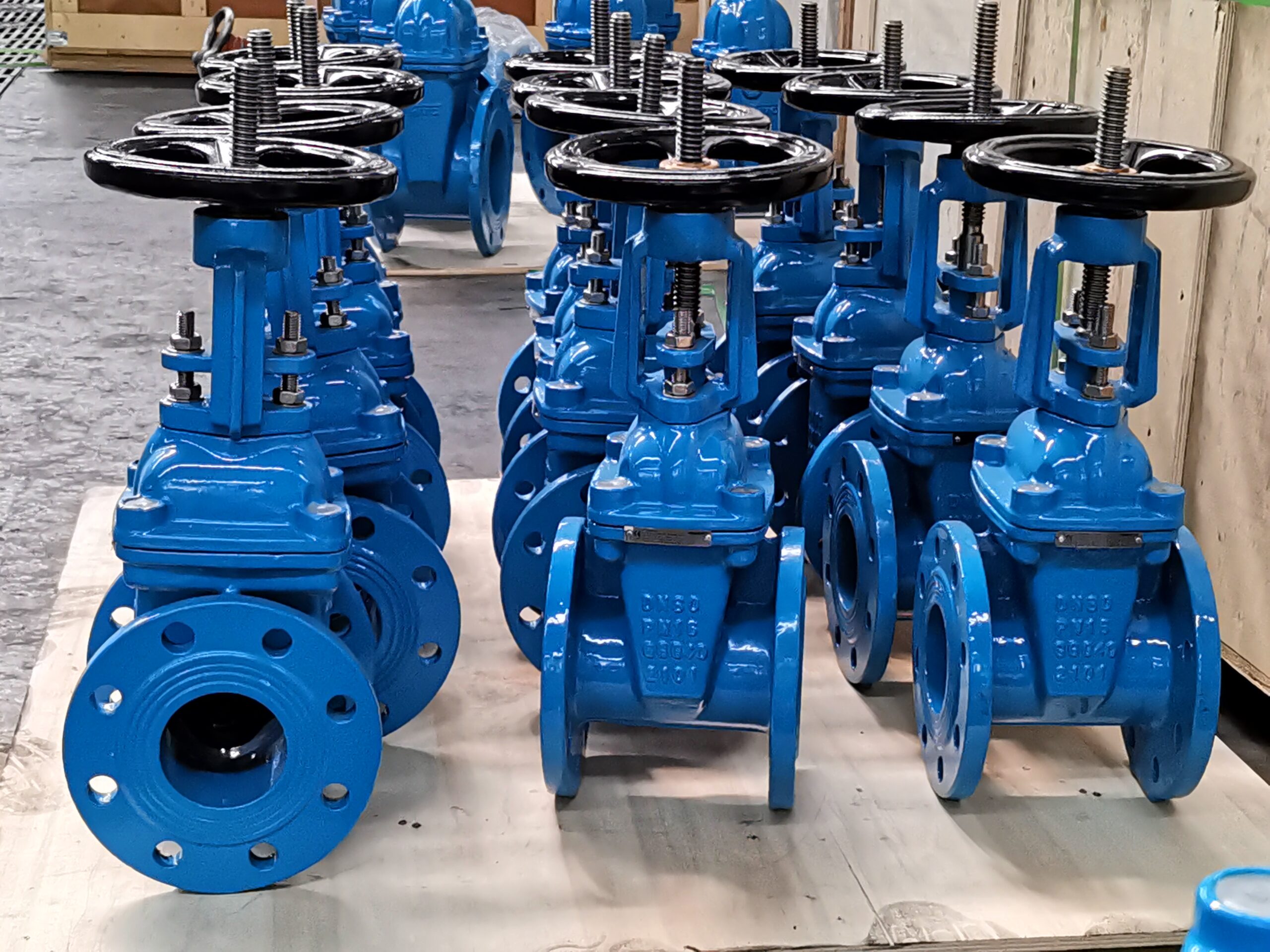Gate valves are one of the most common types of valves used in industrial applications such as chemical plants, refineries, and pipelines. They are linear motion valves that control fluid flow by sliding a disk or gate into the path of the flow. When the gate is fully closed, flow through the valve is completely obstructed. When the gate is fully open, the flow path through the valve is unobstructed. Gate valves are mainly used for on/off applications – they are not suitable for throttling or regulating flow.

There are two main types of gate valves – rising stem and non-rising stem. In a rising stem gate valve, the stem is attached to the gate and rises up as the valve is opened. This allows visual confirmation that the valve is open because the stem is visible above the valve body. In a non-rising stem gate valve, the stem is threaded separately from the gate. As the handwheel on the stem is turned to open and close the valve, the gate rises and lowers but the stem does not move up or down. Non-rising stem valves do not provide visual confirmation of valve position but have the advantage of maintaining a compact envelope.
Early gate valves used metal to metal seats which provided poor shutoff capability. Any scratches or wear on the seating surfaces allowed leakage through the valve when closed. Modern gate valves use resilient seated gates which provide superior shutoff performance. A resilient material such as an elastomer is fitted to the edges of the gate. When the valve is closed, the resilient seating material deforms to create a tight seal against the valve body, preventing leakage even at high pressures.
The principal types of modern resilient seated gate valve are:
- Non Rising Stem Resilient Seated Gate Valve
- Rising Stem Resilient Seated Gate Valve
As the name suggests, this type of gate valve combines the non-rising stem design with a resilient gate seat. The threaded stem does not rise as the valve is operated. Turning the handwheel moves the gate up and down while the stem remains stationary. The gate has a resilient seating material such as rubber or thermoplastic fitted to the sealing faces.
Key features of non rising stem resilient seated gate valves:
- Compact Overall Envelope – Since the stem does not rise or lower, the valve takes up less space. This is advantageous in tight installations.
- No Visual Position Indication – Unlike rising stem valves, position of the gate is not externally apparent. The valve position must be verified by other means.
- Lower Operating Torques – Absence of lifting forces on the stem results in lower operating torques compared to rising stem.
- Bidirectional Shutoff – Resilient gate provides tight shutoff in both flow directions. Can be used on bi-directional lines.
- Bubble Tight Shutoff – Deformation of the resilient seat against the body provides bubble tight shutoff even on gas service.
- High Pressure Rating – Due to the full metal body and absence of dynamic stem seals, these valves can operate at very high pressures, up to 2,500 psi.
- Suitable for Throttling – The resilient seat is forgiving of any damage from the gate edge, allowing some use for throttling control.
- Non-rising stem resilient seated gate valves are rugged and provide reliable on/off control.
Their compact envelope makes them ideal for space constrained installations. The lack of visual indication of valve position is overcome by fitting an indicator or declutchable handwheel. The bidirectional shutoff and high pressure rating allow them to be used in the most arduous industrial applications.
Rising Stem Resilient Seated Gate Valves
In this type of valve, the stem is attached to the gate and rises up as the valve is opened. The gate has a resilient seating material to provide tight shutoff.
Key features of rising stem resilient seated gate valves:
- Visually Indicates Valve Position – The elevation of the stem shows whether the valve is open, closed or at an intermediate position. Useful for quick visual inspections.
- Stem Acts as Position Indicator – If fitted with a pointer, the stem can act as a position indicator. Useful for throttling control.
- Large Rangeability – Due to smooth rising of the stem, these valves can modulate over a wide flow range.
- Easy Automation – Rising stem makes it simple to mount actuators and controllers.
- Higher Operating Torques – Lifting the gate/stem requires more torque compared to non-rising designs.
- Unidirectional Shutoff – Resilient seat provides tight shutoff only in the flow direction opposite to the seat side.
- Prone to Stem Damage – Dynamic stem seals are subject to friction and wear. Stem binding can occur.
Rising stem resilient seated gate valves provide visual confirmation of valve position and are easier to automate. However, the moving stem makes them less compact and subjects them to potential stem damage compared to non-rising designs. Maintenance of stem seals and lubrication is critical.